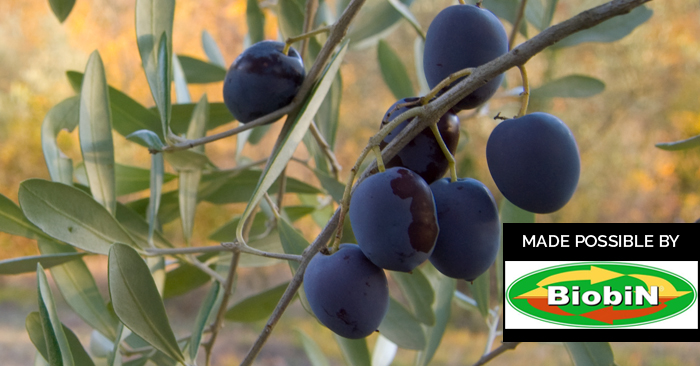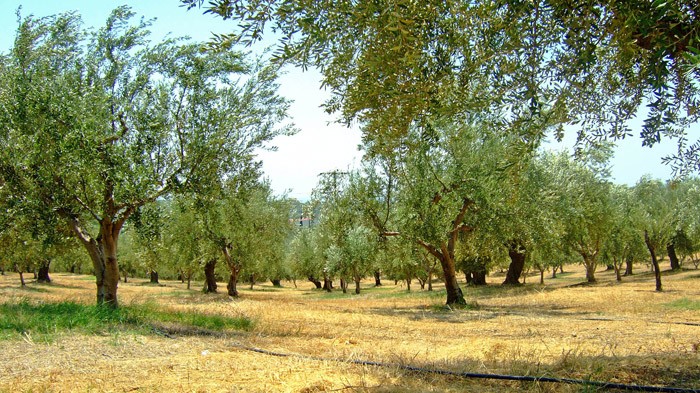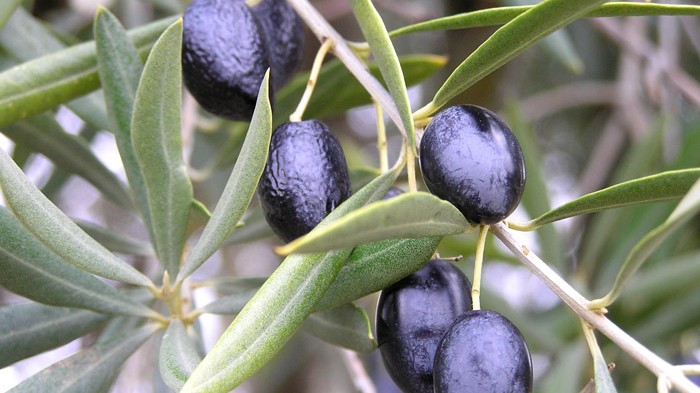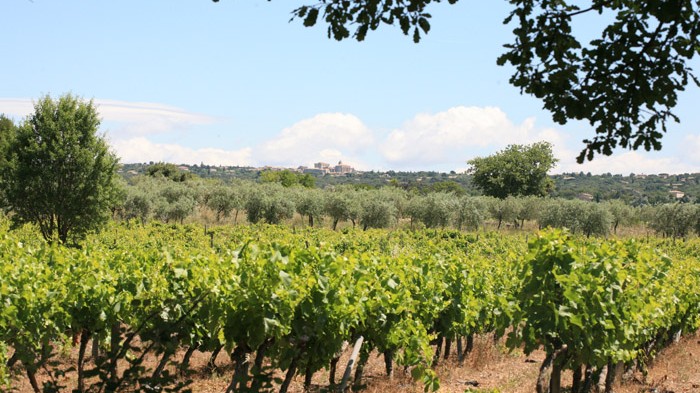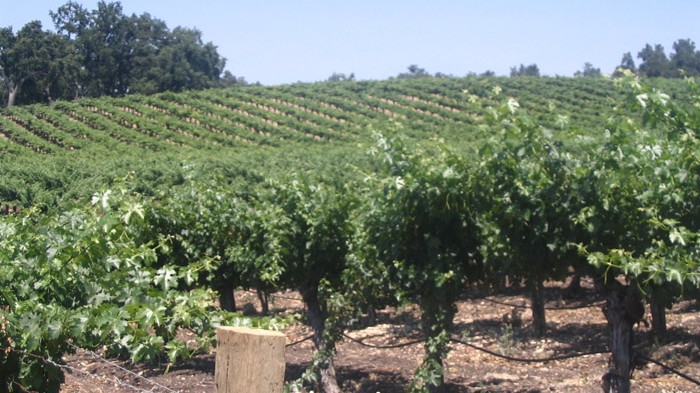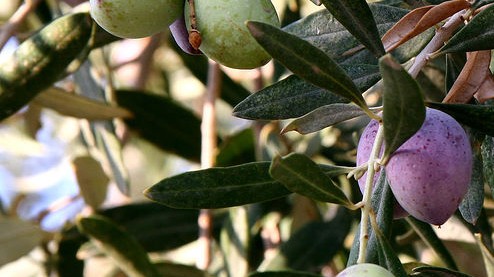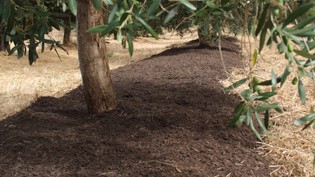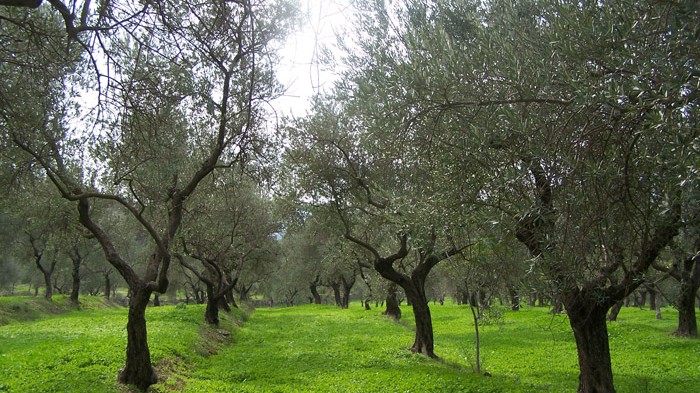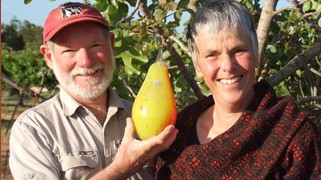Waste Less Recycle More: How New South Wales Is Transforming the Organics Recycling Landscape
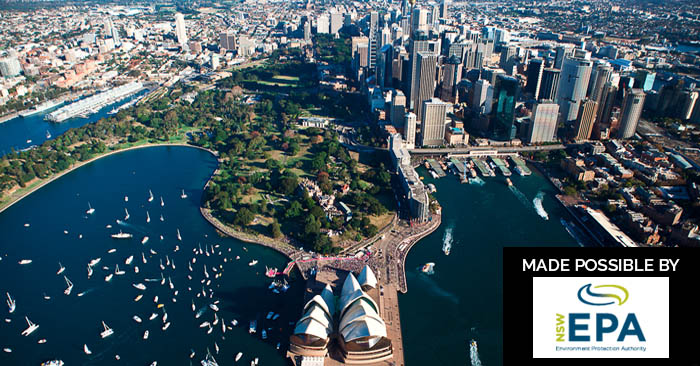
EPISODE SUMMARY
This week we’re in New South Wales, Australia, to learn about the Waste Less Recycle More initiative and the Organics Infrastructure Fund that will see 70 million AUD invested into organics management in the region. We speak with the Director of Waste and Resource Recovery at the NSW Environment Protection Authority (EPA), Steve Beaman, to learn more about this initiative and their plans to pull more organics out of landfills, and discuss the importance of government support and strong policy for success.
We also speak with Robert Niccol of landscape and agricultural supply company Australian Native Landscapes, to get an insight into the processor’s perspective, the challenges that the industry anticipates with this increase in supply, and to discuss further the EPA’s plans to work with industry in developing new markets with their Organics Market Development grants.
MADE POSSIBLE BY NSW ENVIRONMENT PROTECTION AUTHORITY (EPA)
The NSW Environment Protection Authority (EPA) is the primary environmental regulator for New South Wales. Our purpose is to improve environmental performance and waste management for NSW.
The EPA’s Waste Less, Recycle More is a five year, $465.7 million initiative that’s transforming waste management in NSW. It includes funding for organics collections, processing infrastructure and market development, business recycling, drop off centres for problem wastes and programs to tackle litter and illegal dumping.
EPISODE SLIDESHOW
Photo by Pavel. Some Rights Reserved.
TRANSFORMING ORGANICS RECYCLING LANDSCAPE
THE ORGANIC STREAM: We often talk on the organic stream about the importance of policy and government support for making a real impact with our sustainability programs, and the NSW government provides a great example of this – with a strong policy direction stemming from the objectives set out in their waste legislation, the EPA and the NSW government have initiated a host of strategies and programs to reduce waste and keep materials circulating within the economy.
In particular, a 5-year initiative that invests just over 465 million Australian dollars into increasing recycling and keeping materials out of landfill – an unprecedented amount of funding that’s pulled directly from the region’s waste levy. The Waste Less Recycle More initiative has a heavy focus on organics recycling in particular with the Organics Infrastructure Fund. To learn more about this program and the importance of a comprehensive and cohesive policy for success, we gave a call to Steve Beaman, Director of Waste and Resource Recovery at the New South Wales Environment Protection Authority (EPA).
And with a goal of diverting organics from landscape, this will of course mean an increase in organics supply at organic recycling facilities around the region. How will this impact the industry? Well after speaking with Steve we reached out to Robert Niccol of Australian Native Landscapes, or ANL, to get an insight into the processor’s perspective and discuss further the EPA’s plans to work with industry to develop new markets.
Pretty exciting episode – so let’s jump right in with Steve Beaman of the EPA…
INTERVIEW WITH STEVE BEAMAN (EPA)
TOS: So Steve, a lot is happening in New South Wales at the moment – can you fill us in?
STEVE BEAMAN: The New South Wales EPA and government has set ambitious waste targets, both in terms of waste avoidance and in greater recycling and recovery of material if we do generate it as waste. At the end of 2014, we just released a seven year strategy, the Waste Avoidance and Resource Recovery strategy, and that has six key focus areas. It’s about having programs in place to reduce the amount of waste being generated in the first place; it’s to increase recycling at a household, commercial and construction level; it’s about increasing the diversion of waste away from landfill; it’s about establishing community recycling centres across New South Wales to make it easy for the community to get rid of problem wastes and to do so in a safe manner; and finally it’s to reduce illegal dumping and prevent littering.
So there’s a very progressive agenda at the moment in New South Wales. And we’ve been able to have that funded from a waste levy. So, for every tonne of waste that’s disposed of in the populated areas, there’s a government levy that’s imposed on that waste disposal, and the purpose of that levy is to make recycling more cost effective against traditional landfill. And as part of that income stream, the government’s allocated over 465.7 million dollars for us to drive this change. And the change is really around three aspects, which are: greater education and community engagement, delivering new and improved infrastructure, and the last is about having a strong regulatory framework that underpins it, so there’s clarity right across the sector and the community of what the government’s expectations are around the rules about managing waste and recycled products.
TOS: Excellent – and there is a great emphasis on organic waste, I know – you’re directing 70 million dollars of that to an organics program. So what is the key focus for you in terms of organics recycling at the moment?
SB: It’s really around those seven aspects. We’ve just run a series of grant rounds where we’ve got forty three million dollars available of that seventy million for new infrastructure. These are organic processing facilities that are typically a combination of food and garden organics processing and is usually around some form of composting technology. We didn’t have the infrastructure in place, so we’re pulling this stuff out of the bins but we needed the processing capacity to be built, and all that’s being built at the moment.
Our local authorities, our councils that provide the services to the community needed access to new and improved collection systems – and typically that has been mobile garbage bins. So, we’ve funded four hundred and forty three thousand new garbage bins and kitchen caddies, so people can sort out their waste in the kitchen and put it into the right garbage bin.
And this is an exciting one that we’ve just released, but we’ve got four million dollars around market development. And this is around the concept that now that we’ve pulled this organic material out of the system and it’s being processed in these facilities, we have to ensure that we’ve got sustainable and resilient end-markets for this material to be used. If the material gets composted it can go to urban restoration; it can got o mine-site rehabilitation; it can go back to farmland and pasture organic improvements. The thing about Australian soils is that they’re very low in organics typically, and then farming practices over the last two hundred years has depleted those organics even further.
So there’s great multiple benefits here with us taking this stuff out of landfill, processing it and putting it back on the land, improve the water-holding capacity of the land, and also improve the nutrient uptake in some of those soils that are organic poor. So we see this as a great opportunity.
We’re also, from that market development work, looking at how we can assist industry to improve the quality of the compost. Because it’s coming from the domestic waste stream, typically, it’s important to educate communities that they can’t put their used batteries into the organics bin, because it has a consequence: if that battery breaks open, you spread lead through the compost material and renders it useless for use on urban development or agricultural use.
So it’s a multi-faceted program. That’s the thing that’s really exciting about this, it’s trying to attack the issue on a couple of fronts: education and community engagement, industry development, the infrastructure component, and then having the regulations behind it that gives the community the confidence that using recycled products is the way to go.
TOS: Very good – and I’d like to talk about the importance of this strong policy framework that underpins everything and how that has contributed to the program’s success?
SB: I think the thing about Waste Less Recycle More is that success is really going to be attributable to having a really strong policy, certainty and clarity around it, and that’s why I started with the Waste Avoidance and Resource Recovery strategy. The government has set this long-term strategy, it’s adopted the targets to increase recycling, reduce illegal dumping and to prevent littering, and that really gives us the instruction that we need to go and deliver these. These are government priorities, and those priorities really stem from community expectations – the community wants to see these services being offered and want to see these improvements.
But the fact that we’ve actually been able to align a very strong policy commitment directly from government, and have that underpinned by a very strong funding program, really gives us the recipe we need to be able to deliver this program. And I think it changes the confidence in the community. They can see and engage with the EPA and government on waste and recycling now, and we’re able to provide that information out to the community – we have an excellent website called Love Food Hate Waste, which is around waste avoidance.
But this also has changed the approach by the waste sector, where it’s moving away from the traditional waste collection and waste disposal and towards trying to be a part of this new circular economy and a recycling and resource recovery agenda. So we see this as a great opportunity to change the agenda in New South Wales.
TOS: That’s very exciting. And let’s talk more about the market development side of things for a moment. Developing compost markets is quite a big task – can you tell me a little more about your plans here, and are you anticipating any challenges?
SB: with the markets for compost, I think we’re really pulling a lot of material out of the system, and we need to be careful. That’s why we’re investing in a market development program, so we get that balance right and we don’t disturb the system too much by pushing too much material through the system, thereby increasing the supply and affecting prices. So we need to think carefully and we’re working in partnership with industry around exploring how we can help industry and local government to stimulate the markets so that we’re actually resilient for the longer term, and when more material comes through we’ve actually generated the demand at the end-use level. And that the farmers and the urban restoration workers and so on are more comfortable in using the organics in their soils and agricultural systems, so we can get that market to mature as fast as we can and it then becomes a self-sustaining system.
TOS: It’s great that there is so much investment going into it. But moving out again – are there any pressing challenges you’re facing at the moment in terms of organics recycling – or any problem areas you’re focusing on?
SB: The single main challenge for us is contamination. This is around trying to educate the community and industry. And this is why it’s a very interesting program, because people have things in their household that they mightn’t know how to get rid of. Oil, paint, gas bottles, batteries, smoke detectors, light bulbs… And so if we find that they’re unsure, they’ll often inadvertently do the wrong thing and put it into the wrong bin.
And this is why part of another program of Waste Less Recycle More is the community recycling centres. So there’s another seventy million dollars to build these drop-off centres, and the aim is to have eighty-six of these centres where you can drop off all those problem items you’ve got in the household for free. So if we can make it easy for the community to easily dispose of these problem materials, and also educate them on why it’s important that they don’t drop these materials into their organics bins, then that’s going to keep improving the product quality of our organics and compost.
It’s a real issue for us, and we’re starting to do some exciting work on rolling out a state-wide education campaign to help improve the knowledge and behaviour of householders. And that’s what we’re starting to work on next.
TOS: And all this comes from the funding from the waste levy. Do you consider this waste levy to be the most important, or crucial part of the program’s success?
SB: I’d describe the Waste and Resource Recovery framework as an ecosystem – I don’t think there’s one part that dominates over the others. I think it’s getting all the parts to work in concert with each other. So it’s about having a very strong direction from government to do the right thing. The government has said that we want to achieve these very ambitious targets, and that sends a very strong message. It’s about having a financial and economic tool with the waste levy and that we’ve set a price signal for our landfills and we don’t want landfills to be the predominant processing option – we want people to think a bit more broadly. It’s about having education as well, and that sort of engagement with industry and community so that people are aware and we know how to influence the knowledge, attitudes and behaviours.
None of this works if you don’t have infrastructure, and all this falls apart if you don’t have a regulatory regime that sets very clear standards and has offence provisions that say that if you don’t meet these standards, there will be very serious consequences. And I think, from my end, it’s not just the levy that’s important – although it is a very important aspect – but it’s getting all aspects to work well together that is important. And if we get it all operating together in a very clear and consistent manner, I think that’s when we’re going to get the best outcome.
TOS: It will be very exciting to see how it all works, and I’m sure you’re very busy focusing on this now – but as a final question now – I’d love to know – what’s next for the EPA in New South Wales?
SB: There are two things that are exciting for us. Looking forward to future population growth, and hopefully less waste generation, and looking at where we should have the next generation of infrastructure. Where should it be installed? Are there areas around the state where we’re short on infrastructure, and how can we stimulate that investment from the local community or industry? So it’s about making sure we’ve got infrastructure in the right locations.
And the second really exciting thing we’re working on – and we’ve just released it for consultation – is a new state-wide education strategy called Changing Behaviour Together. And this is really around building a platform for a conversation with the community at all levels – with local government, industry and residents – and finding out what their needs are in relation to their knowledge, attitudes and behaviours around waste and recycling, and how can we help standardise that and run state-wide programs to focus on that behaviour change that really underpins our investment in infrastructure.
TOS: Okay, so there’s a real focus on education and outreach there…
SB: Yes, absolutely. I think you can have very complex systems of multiple bins and recycling plants, but it takes an engaged community to make these systems work to their optimum. If people aren’t using these systems correctly, and they don’t understand why it’s important to separate properly, these systems do tend to struggle. And that’s where you get this issue of contamination really raising it’s head. So, I think you really get good bang for your buck from your investment in infrastructure if you have it underpinned by a strong education program.
TOS: Great stuff. And we’ll be following the progress very closely – and best of with the program in the next few years!
PROCESSOR’S PERSPECTIVE: EXPANDING MARKETS A CHALLENGE
THE ORGANIC STREAM: And that was Steve Beaman of the EPA giving us an insight into the NWS’s organic recycling plans. Steve mentioned the need to be very careful in increasing supply of organics to not upset the market (blah?) – and this is indeed something that requires attention. What are the challenges that industry anticipates with this increase, and how big of a task will it be to develop new markets for organic products, compost in particular?
Another key challenge might be contamination rate – with plans to increase kerbside collection, are processors preparing for an increase in contamination as well?
We put these questions to Robert Niccol of ANL and this is what he told us…
TOS: Hi Rob, thanks for coming on the show. Just before we begin, can you give us a short introduction to Australian Natural Landscape?
ROBERT NICCOL: We began life as a landscape construction company about forty five years ago, and that grew into looking for materials to use in landscape supplies. Pat Soars who owns the company started going over the mountains and getting truckloads of bark, and coming back into Sydney and selling as mulch and what have you. We then got into composting, greenwaste, biosolids and all the urban waste streams that are around nowadays.
We currently compost or process about five hundred thousand tonnes of sorted organic streams at the moment. We’re a very strong landscape and agricultural compost supplies company. You name it, we’re into it – we’ve a very strong consumer market of packaged products, supply chain, bulk material supply and landscape construction – that sort of thing.
TOS: Right, and so as a processor on the ground, the government’s plans will have an impact on your business and indeed the industry as a whole. What will this impact be, and are there any concerns in the industry about this increase in supply of organics?
RN: The government, to their credit, is spending a quite extraordinary amount of money in industry support and in terms of processing and market development in a whole rage of areas. It’s the best part of half a billion dollars. It’s a huge amount of money, and we will never see the like of that again.
I think there are some concerns about whether or not we can grow the markets sustainably to consume all the additional tonnages. So I think that is a big ask. The government is certainly supporting market development of about seventy thousand tonnes of additional uptake, but the increase of supply will be greater than that, so there’s potentially an issue there.
Whether or not that becomes a problem will really hinge on how effectively the market development money is implemented and spent; what sort of strategies come out; how those markets are developed; and can we get structural change in the bigger markets, like the agricultural sector, which is really where we see the main growth potential being in terms of demand. So, is it going to be a struggle? Yes. I think there are a lot of opportunities for lots of businesses, but the additional tonnes…yeah, it will be a struggle.
TOS: What are some of the main challenges, or concerns, you have about market development – what barriers to you face at the moment as an industry that will need to be addressed in order for this to work?
RN: Where there’s an issue and a debate that needs to be had – and it has been had some extent – is that you do have different business models, and I’m sure that’s the same all over the world. In our case, we’re one of a number of private companies that started as a horticultural supplies company, and that business has grown and eventually got into what would be considered as the resource recovery and waste sector. But at heart, we are a horticultural supplies company, selling horticultural products.
Then you’ve got the other business model, which tends to be the larger corporatized kinds – those sorts of businesses who are in the waste sector. You know, the real waste driven companies. They don’t come into the market with a horticultural supplies philosophy – they come in with a waste management philosophy, and the two are quite different. Their business model is very much about getting cost recovery at the gate as soon as the material comes in, and then the products of their processing go into the marketplace at a very low dollar value. Whereas those of us in the horticultural supplies tend to have a lower gate fee because we’re expecting to have a value recognised in the output at the end. And they are different models, and there are obvious difficulties with that in the marketplace when you have those two models producing an output that’s competing differently with a different economic structure. That’s a problem.
I think that is something our industry has struggled with and the government has struggled with, and I don’t know that there is a good answer to that. But the difficulty is that when you’re looking to grow markets, like the agricultural sector – and we’re particularly looking at cropping and grazing – where there are more marginal growing sectors anyway, they have some very good years, but they have some very lean years in between. So they’re a relatively low return sector anyway. So you’re going into the hardest part of a market to actually get money out of them, in terms of value for your product.
And the products in those sort of applications are effective, but they’re still competing with fertilisers and bedded down systems. So part of what we need to do is engage in those systems, and get product uptake in those systems. They are inherently a conservative sector, so you need to get those people who have been growing often multigenerationally in a particular fashion. You need to engage with them and give them some comfort that what we have to offer is of value, and it’s sustainable and will work for them with their current cost models.
So we’re looking to actually see, out of the market engagement, the real value of what we have to offer recognised, and to try and penetrate those markets and show the effectiveness of the product. We have to do it at a competitive price, obviously, but unless you break that nexus, that market will never exist. If we don’t get past this first hurdle, where they’re used to using synthetic fertilisers, then it will never change.
TOS: Yes and here you mention education and outreach – which are key components to developing markets in New South Wales?
RN: I think when you look at the current supplies into those sectors, you have larger, agricultural chemical supplies companies who have been supplying into that sector for many, many years; their data is very good and they have a history of use with those products working well. They’ve engaged well, they have a lot of money behind them, and they’ve been able to set up their supply into that sector, well supported with good data, good technology and good advice.
Whereas we’re stepping into that without the dollars behind a Monsanto type of company. We don’t have those sort of resources and we’re stepping into a conservative area, so the education and engagement, and the extension of the good information and data that we have at the moment…we haven’t been very effective in getting that out. So there will be a lot of people who I think we will get to change – and are probably quite keen to change – but we haven’t yet spoken to them. We haven’t engaged with them and we haven’t explained the case well. So, the education side is very important.
TOS: And going back to the increase supply and perhaps another challenge you’re facing: the EPA is focusing a lot of their efforts on educating people about putting materials in the right bins and so on – really getting people to understand the importance of recycling in an effort to keep contamination low. With kerbside collection expanding in the next few years, are you concerned about contamination? What has been your experience so far?
RN: We’ve had quite a number of different contracts over the last twent y five years. Often the contamination is an issue given that most of these streams come out of local government. So they’re within a local area, and that local government facility or waste system is the driver for the recovery of whatever the new stream is – when they decide to introduce a green bin and kerbside collection for green and food waste, or whatever it is. If that council or local government authority has an environmental philosophy from top to bottom, where everything that flows from the top down is about closing the loop and understanding that the outputs of these materials will be coming back to our environment, then they see the issue is about contamination and how it affects the value or quality of the product. And they set up really strong and clear systems that are linked to their council philosophy.
When they start, the new services come in and that’s when you have early issues when it’s new to people and they don’t necessarily know what’s going on. If you have a council that sets up a contract, it’s well aware of that and as soon as those issues arise, they’re proactive – they don’t want the contamination and engage with local residents – and generally speaking, those issues evaporate because they’re driven from the council and local community. And someone has a contract to collect it, and the collecting contractor is a really important part of that as well because they’re the ones picking up the bins – it’ll end up coming to us and as a processor, it’s critical to us that we don’t have contamination. But if you have everyone in that loop with the same general philosophy, contamination isn’t an issue, because if you as a resident don’t care and you keep on putting garbage in your bin, they take away the service.
If on the other hand, and we’ve certainly had contracts where that’s not a driver within the government, then it’s very difficult to manage – because as the end contractor, you don’t have the power in the process to stop that contamination coming in, and that becomes very difficult. So it’s very much down to education and I know the state government is engaging very strongly with local government, and that’s absolutely where it needs to be – because they’re the drivers of the contracts; they’re the people who sign the contracts up with people like us, so if they’re not supportive of it and don’t have structures at the end of the day to remove a service if it comes to that, then we’re stuck with whatever comes in the truck.
TOS: And the government’s cooperation with industry is another important aspect. So, building up relationships and strong communication channels between them is crucial for success, I imagine?
RN: That’s absolutely critical. We’ve run a couple of different grants within our business, and I think personally that the process that we’ve gone through has just been exceptional. They’ve had people within government that understand our sector that we can go and talk to. So if you’re that person, I can go to you and say, “Eleen, this is the grant we’re thinking of putting” and I get very clear guidance, such as, “Yes that’s good, but I’d think about doing that, that and that”, or, “No, it doesn’t fit within the guidelines”. So very quickly you get an answer as to whether the idea you have fits with what they want. If it does, there is an opportunity to get economic consultants in to evaluate the business case and give you advice on whether or not they think economics of what you put forward is logical. After we’ve won our grant, they then have consultants – I think we have about twenty hours of free consultancy after the grant is approved to get through the approvals process and to get thought issues you have in in actually getting your facility built, or whatever it is, once the grant is up. And there’s support after the grant.
I think, really, as a private business, you can’t ask for more than that. It’s been very, very good. It’s a lot of money that they’re spending and it’s a pretty big achievement to get that sort of money out of treasury for our sector, so I think they’ve done a pretty amazing job, really, for the complexity of the programs they’re looking for.
TOS: So it’s an exciting time now in New South Wales, it’ll be very interesting to see how it all goes…
RN: Oh, definitely. It’s certainly going to be a lot of activity and it will be interesting to see where we are in our sector over the next couple of years, because an extra hundred and sixty thousand tonnes of material is what they’re proposing to generate, and that’s a lot on top of what we’re currently doing.




